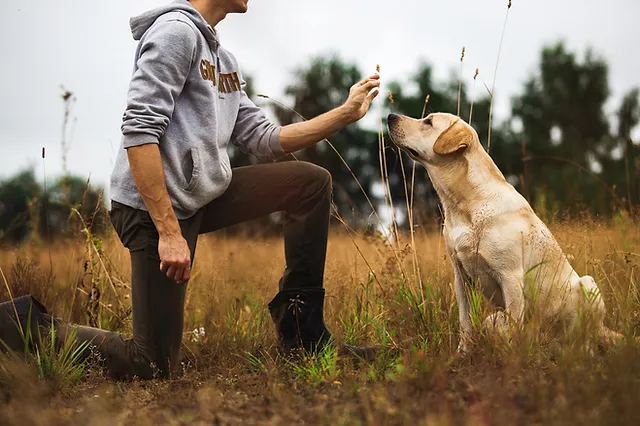Teaching your dog manners is an important part of pet ownership because it helps owners and pets get along well. Effective training involves more than giving basic commands. It is a complete process that focuses on the dog’s behavior and needs while strengthening the bond between the dog and its human friend. This article discusses five important steps you need to take to train your dog. They will help you have a wonderful and enjoyable training journey.
1. Make sure communication is clear
Clear communication is the most important part of teaching a dog. Dogs are not designed to understand human speech, so you need to make sure the way you talk to them is clear and consistent. This helps the dog associate a specific command with an action or habit, making it easier for him to learn and respond. This type of communication works better if you use clear signals, short commands, and a steady tone. This makes training sessions more useful and less confusing for the dog.
2. Make the classroom a good place to learn
To make dog training go smoothly, you need to create a positive learning environment. Dogs should learn in a place where they feel safe and encouraged to do so. Positive feedback, such as treats and praise, can help your dog do what you want and keep doing it. Additionally, ensuring that training sessions are fun and do not involve fear or punishment will keep your dog interested and focused, which will help him remember and apply what he has learned.
3. Better master basic commands
Learning basic commands is the first step to good training. They form the basis for building more complex behavior. Starting with basic commands like ‘sit’, ‘stay’, ‘come’, ‘stay up’, and ‘down’, it sets the tone for communication and control. As the dog becomes better at following these basic commands, more difficult skills and tasks can be added to the training, improving the dog’s cognitive and behavioral skills.
4. Repeated exercise and strengthening
Consistency is very important when teaching a dog. Structured and regular practice sessions can help the dog retain what he learns so that he always understands and follows the training. Training with daily tasks and routines consistently praises the dog, allowing it to apply the skills learned in real-world situations. It is easier to communicate and set clear goals when rewards and punishments are always the same. This makes the learning process more effective.
5. Pay attention to behavioral problems
Behavioral issues should also be identified and addressed as part of the training. Recognizing and addressing this behavior as soon as possible can prevent it from getting worse and improve the dog’s overall health. Finding the real cause of this behavior – whether it is caused by worry, boredom, or something else – is important to find the best way to train them to stop and correct this behavior.
Conclusion
All in all, training a dog involves many steps, including clear communication, a good learning environment, basic command training, consistent practice, and controlling the dog’s behavior. By following these important steps, dog owners can train their dogs, improve the lives of both the dog and the owner, and build a respectful and caring relationship.
FAQs
1. Why is it important to speak clearly to your dog when teaching?
When you speak clearly to your dog, he knows what you want him to do, which reduces confusion and speeds up the training process. It helps dogs to associate certain commands with actions or behavior.
2. What impact does a good learning environment have on teaching dogs?
A good learning environment will make your dog want to attend training classes, improving his ability to learn and remember new behaviors. It creates a fun and safe space where dogs can learn without feeling scared or stressed.
3. Why is it good to teach your dog simple commands?
Starting with simple commands provides a foundation for both the dog and the owner. It establishes the basic ways of talking and controlling, which will be needed later when you want to deal with more complex behaviors and commands.
4. Why is it important to train your dog over and over again?
Regular practice helps dogs remember what they have learned because it reinforces what they have learned. Repeating commands and actions over and over will help your dog remember them and make him more obedient.
5. What influence does dealing with behavioral problems have on the overall educational process?
Addressing behavioral problems early in the training process can prevent them from getting worse or becoming more deeply entrenched. A well-rounded and well-behaved dog understands and corrects these habits.
6. Will inconsistent teaching methods confuse dogs?
Yes, inconsistent training, such as giving the dog different instructions for the same thing or changing the rules, can confuse the dog and make it harder to learn. It is important that training is consistent with orders, rules, and standards.
7. How can dog owners create a great place for their dogs to learn?
Owners can create a good learning environment by praising and rewarding good behavior and keeping training sessions short and fun, rather than using punishment or negative reinforcement, which can make the dog feel anxious or fearful.
